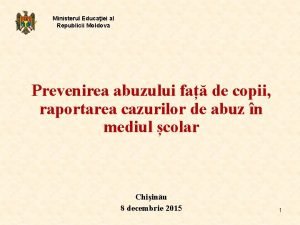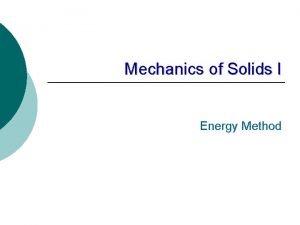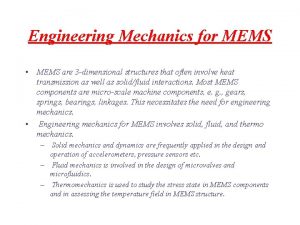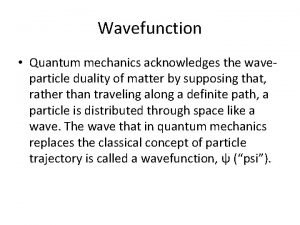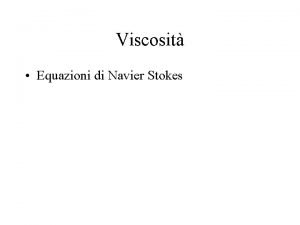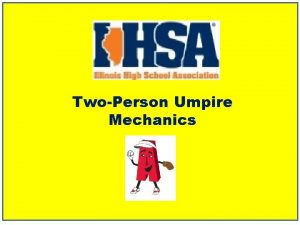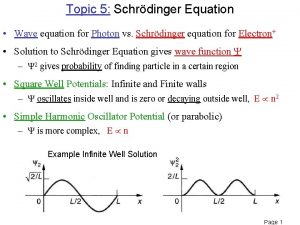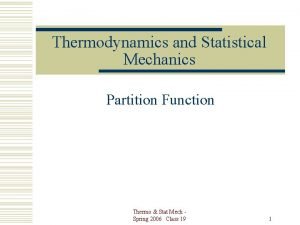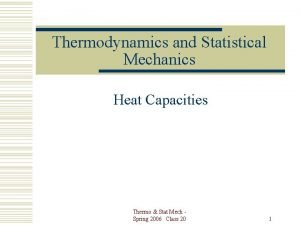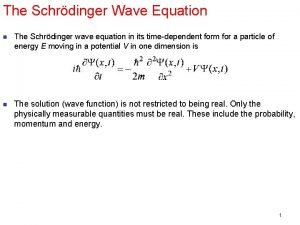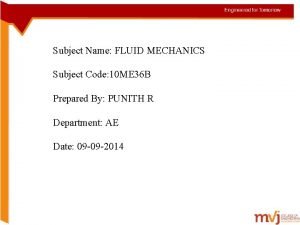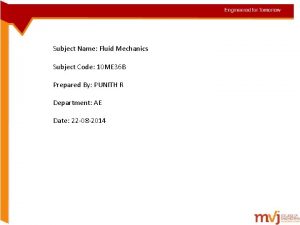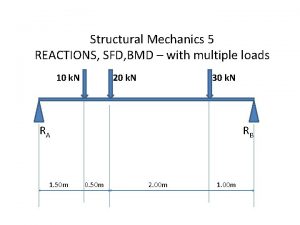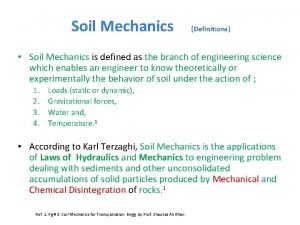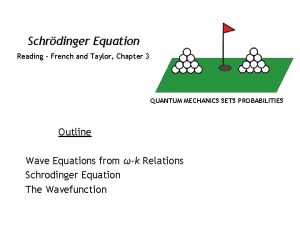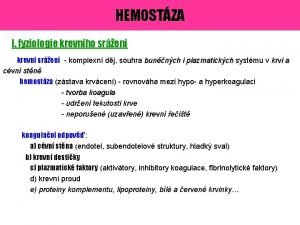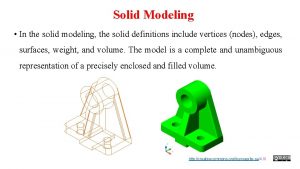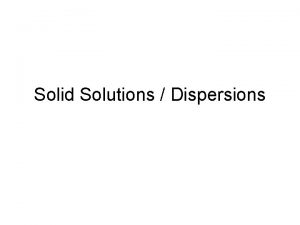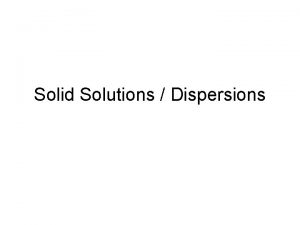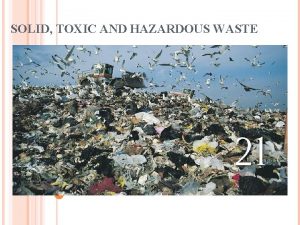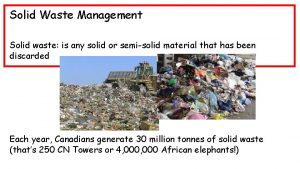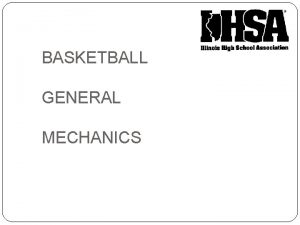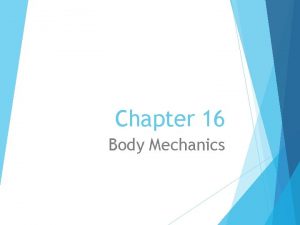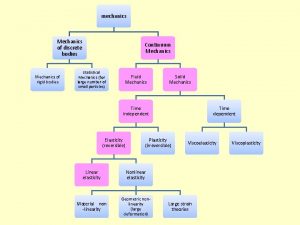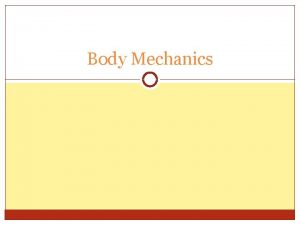Linkping University Sren Sjstrm IEI Solid Mechanics Highcycle








































- Slides: 40

Linköping University Sören Sjöström IEI, Solid Mechanics

High-cycle fatigue (HCF) Railway accidents and the Wöhler test Catastrophe ferroviaire de Meudon (entre Versailles et Paris), 8 mai 1945 Entgleisung 19. Oktober 1875, Bahnhof Timelkam (zwischen Linz und Salzburg) Mystery: Wheels and axles completely correctly designed statically designed 2

Fatigue: Wöhler test German railway engineer August Wöhler 1819 -1914 sa s(t) at a fixed point on the surface -sa Roller bearing F 3 t

Fatigue: Wöhler diagram sa LCF region or log sa HCF region Fatigue limit 3 4 5 6 7 log Nf sa -sa 4 t

Fatigue: Wöhler diagram, continued Other name: S-N diagram sa or log sa Increasing sm Fatigue limit 3 4 5 6 5 log Nf sa sa -sa 7 sm t -sa t

Haigh diagram sa s. Y s. FL=su sa t -sa (s. FLP, s. FLP) =(sup, sup) sa sm -sa s. Y Allowed region 6 t s. UTS=s. B sm

HCF (High-cycle Fatigue) The Haigh diagram has been set up by standardised testing using a standardised test specimen, for instance: Polished In most data tables, a specimen diameter of 10 mm has been used 7

I. Surface roughness Rough surfaces are more dangerous in fatigue than smooth surfaces If fatigue data have been measured on ideally smooth (polished) specimens, how can we use them for a not so ideally smooth specimen? sa Reduction! s. FL=su k ·s u (s. FLP, s. FLP) =(sup, sup) (sup, k·sup) s. UTS=s. B 8 sm

Surface roughness, cont. In this example, (a) polished surface (b) ground surface (c) machined surface (d) ’notch’ (e) hot-rolled surface (f) corrosion in tap water (g) corrosion in salt water (all are for steel materials) Note that: • Fatigue properties are dramatically worsened under corrosive conditions [(f) and (g)] • The higher tensile strength the steel has, the more sensitive it is to surface conditions • A bad surface can be very destructive 9

II. Loaded volume The risk of failure for a given load increases with the amount of material loaded (Weibull statistics – the larger volume of material is loaded, the more likely is it that a fatally bad material point exists) Again, if the actual case loads a different volume than the standardised test specimen, we must therefore reduce the Haigh diagram. sa s. FL=su d ·s u (s. FLP, s. FLP) =(sup, sup) (sup, d·sup) s. UTS=s. B 10 sm

Loaded volume, cont. Steel with (a) s. UTS = 1500 Mpa (b) s. UTS = 1000 MPa (c) s. UTS = 600 MPa (d) s. UTS = 400 MPa (e) aluminium alloy Note: this effect is usually less than that of surface condition 11

III. Stress concentrations If there exists a local region of raised stress, this region is of course dangerous from the point of view of fatigue. The maximum stress in such a region can be computed by using stress concentration factor Kt diagrams. One example is shown in the figure 12

Stress concentrations, cont. The same reasoning as before about volumes and statistical risks can be applied. Since the volume having high stress is small, we need not take the full stress concentration factor Kt into account; instead we define a fatigue strength reduction factor q = notch sensitivity factor; depends on the notch radius and the tensile strength of the material 13

Stress concentrations, continued In the diagram to the left, all curves are for steel. (a) s. UTS = 1600 Mpa (b) s. UTS = 1300 Mpa (c) s. UTS = 1000 Mpa (d) s. UTS = 700 Mpa (e) s. UTS = 400 Mpa Note again that higher s. UTS ⇒ higher q ⇒ higher sensitivity to high stresses in notches 14

Stress concentrations, cont. Kt and Kf are now used for increasing the nominal stress state: Nominal: To be carried into the reduced Haigh diagram ⇒ Increased: sa s. FL=su (s. FLP, s. FLP) = (sup, sup) (Ktsm, Kfsa) (sm, sa) s. UTS=s. B 15 sm

Further, one usually does not allow loads above the yield strength. I. e. , the line corresponding to is also entered in the Haigh diagram: sa Y su (sup, sup) (Ktsm, Kfsa) (sm, sa) Y Finally allowed stress states 16 s. UTS=s. B sm

Safety against fatigue Study the load point P (Ktsm, Kfsa). Draw a straight line OC’ from the origin through the load point to the Intersection with the limit of the allowed region. Define ’allowed length’/’used length’ as safety factor : sa su (sup, sup) C’ P O 17 s. B sm

Safety against fatigue Study the load point P (Ktsm, Kfsa). Alternatively: Draw a straight line DB’ from the sa axis through the load point to the intersection with the limit of the allowed region. Define ’allowed length’/’used length’ as safety factor : sa su (sup, sup) B’ D P O 18 s. UTS=s. B sm

Safety against fatigue Study the load point P (Ktsm, Kfsa). Another alternative: Draw a vertical line AA’ from the origin through the load point to the intersection with the limit of the allowed region. Define ’allowed length’/’used length’ as safety factor : sa su (sup, sup) A’ O 19 P A s. UTS=s. B sm

www. liu. se

21

22

23

Further, one usually does not allow loads above the yield strength. I. e. , the line corresponding to is also entered in the Haigh diagram: sa Y su (sup, sup) (Ktsm, Kfsa) (sm, sa) Y Finally allowed stress states 24 s. UTS=s. B sm

III. Stress concentrations If there exists a local region of raised stress, this region is of course dangerous from the point of view of fatigue. The maximum stress in such a region can be computed by using stress concentration factor Kt diagrams. One example is shown in the figure 25

Haigh diagram sa s. Y s. FL=su (s. FLP, s. FLP) =(sup, sup) s. Y Allowed region 26 s. UTS=s. B sm

The same reasoning as before about volumes and statistical risks can be applied. Thus, we need not take the full stress concentration factor Kt into account; instead we define a fatigue strength reduction factor where the notch sensitivity factor q depends on the notch radius and the tensile strength of the material 27

Or, shown in another way: Large deformation Fracture (static or fatigue) Instability 28

Different failure types Plastic flow Large deformation Creep Too large stress Fracture Static fracture Instability 29 Fatigue fracture

History of a fatigue failure 30 -- Initiation of a small crack -- Growth of the crack -- Final fracture

Fatigue: Wöhler diagram, continued Other name: S-N diagram sa or log sa Increasing sm Fatigue limit 3 4 5 6 31 log Nf sa sa -sa 7 sm t -sa t

Fatigue: Wöhler diagram sa or log sa Fatigue limit 3 4 5 6 7 log Nf sa -sa 32 t

Fatigue: Wöhler diagram 33

History of a fatigue failure: Aloha Airlines’ flight No. 243, 28 th April , 1988 X X X 13: 48 13: 55 13: 47 13: 25 34

Result: the one and only Boeing 737 convertible! 35

36

37

Examples of fatigue failure Aloha Airlines Boeing 737 ’convertible’ (28 th April, 1988) 38

Examples of designs in which fatigue analysis is essential 39

MARKERINGSYTA FÖR BILDER När du gör egna slides, placera bilder och andra illustrationer inom dessa fält. Titta gärna i ”baspresentationen” för exempel på hur placeringen kan göras. 40
 Trombocyty
Trombocyty What is iei
What is iei Diptongo con ai
Diptongo con ai Codul educa'iei
Codul educa'iei Ministerul educa'iei
Ministerul educa'iei Ministerul educa'iei
Ministerul educa'iei Ministerul educa'iei
Ministerul educa'iei Comisia multidisciplinară intrașcolară
Comisia multidisciplinară intrașcolară Ministerul educa'iei
Ministerul educa'iei Strain energy example
Strain energy example Solid mechanics
Solid mechanics Crystalline vs amorphous
Crystalline vs amorphous Solid solution example
Solid solution example Covalent network solid vs molecular solid
Covalent network solid vs molecular solid Crystalline solid and amorphous solid
Crystalline solid and amorphous solid Crystalline solid
Crystalline solid Crystalline solid and amorphous solid
Crystalline solid and amorphous solid Interfacial angles
Interfacial angles When a solid completely penetrates another solid
When a solid completely penetrates another solid When a solid completely penetrates another solid
When a solid completely penetrates another solid Evaporation of mixtures
Evaporation of mixtures 沈榮麟
沈榮麟 Expectation value of hermitian operator
Expectation value of hermitian operator Stokes fluid mechanics
Stokes fluid mechanics Static equilibrium
Static equilibrium Nfhs football umpire mechanics
Nfhs football umpire mechanics Plate umpire mechanics
Plate umpire mechanics Expectation value of energy in quantum mechanics
Expectation value of energy in quantum mechanics Stat
Stat Statistical mechanics
Statistical mechanics Expectation value in quantum mechanics
Expectation value in quantum mechanics Expectation value of energy in quantum mechanics
Expectation value of energy in quantum mechanics Classical equipartition
Classical equipartition Ahmaths
Ahmaths Loss of head due to sudden contraction of pipe *
Loss of head due to sudden contraction of pipe * Fluid mechanics subject code
Fluid mechanics subject code Sfd bmd diagram
Sfd bmd diagram What is microcanonical ensemble
What is microcanonical ensemble Examples of chemical and mechanical weathering
Examples of chemical and mechanical weathering Dimensionless groups in fluid mechanics
Dimensionless groups in fluid mechanics Schrodingers cay
Schrodingers cay





